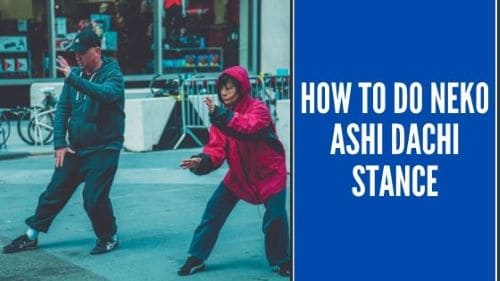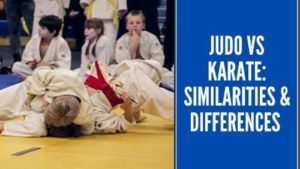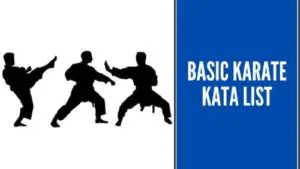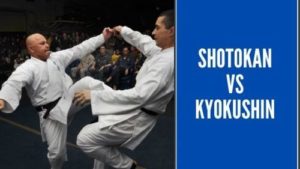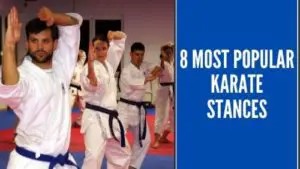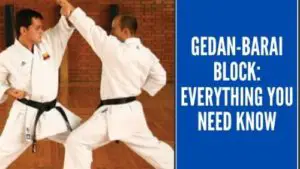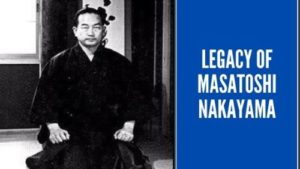Neko Ashi Dachi (it means “position of the cat’s feet”) is the Japanese name of the martial art stance with one foot resting only on the toes and should be considered a position of passage towards another more solid.
This stance can be unstable if the rest of the body is not correctly aligned according to the right position of the center of gravity.
The form itself is important for the study and style of Karate. Wadoryu is the Karate style that counts the most variations of Neko Ashi. It uses four.
When facing the attacking opponent frontally, the Neko Ashi Dachi is used to move quickly to 90 degrees to the attack of the opponent. By rotating the hips, the front foot is slightly rotated after placing it on the ground, so that it takes on the function of the rear foot in the new Neko Ashi Dachi position.
In the same way, you can move back diagonally, placing space between you and the attacker while creating a new stable stance that varies with the changing of the kata, that is, by the movements suggested by a certain Karate school.
The purpose of this position is to separate power and agility. It requires concentration to respond quickly, using the front foot for rapid movements, and precision to exploit all the force generated by the weight placed on the rear leg, should it be necessary to deal a hard blow to the opponent who carelessly attacks.
A solid cat stance exudes beauty and lethal grace, just like a majestic panther ready to pounce on its prey. The weight placed on the back leg is ready to be released like a spring, but to master this it requires a lot of training and physical conditioning.
How to Perform the Stance
The position is similar to the renoji dachi with the front foot raised and the center of gravity aligned with the balance point of the rear foot.
Specifically, here’s how to perform it step by step:
- Starting with your feet together, and pointing straight in front of you, open the foot that will be the rear foot by 30 degrees (or do the Musubi dachi)
- Bring your front foot to 1.5-foot length to the front (if you kneel, your knee should touch the ground next to the toes of your front foot)
- Lowered yourself using the hip flexors and moving the center of gravity of the body on the imaginary line that falls in the middle of the rear foot. It is like sitting on an invisible stool, and you want to go down to put enough pressure on the rear leg to keep you stable.
- Make sure that the knees are aligned with the direction of the feet and keep them slightly pointing inward (they must never point outwards)
- Raise the heel of the front foot and adjust your center of gravity until you can raise and lower the heel without ever losing balance.
If you use the 30-degree angle it will be easier to perform, and you will not risk hurting yourself during exercises that require the use of Neko Ashi Dachi. You should never feel pain while performing the Neko Ashi Dachi.
If your foot and knee are not aligned, you will likely experience discomfort first and pain later. If we imagine adding speed, power and external load to the movements you made during practice, there will undoubtedly be a knee injury in your future. Don’t make this trivial mistake.
To correctly position your center of gravity, make sure you have your buttocks behind the heel of your rear foot. If you draw an imaginary line that starts from your buttocks and descends perpendicularly to the floor while you are in the position of the Neko Ashi Dachi, it should fall almost 2 inches behind the heel.
What Martial Arts Use this Stance
Neko Ashi Dachi is the specific adaptation used in Karate. This stance is found in other martial arts like Taijiquan (Tai Chi). Taijiquan shows it in many movements like White Crane Spreads Its Wings and Reverse Reeling Forearm. Also, Shaolin Kung Fu and Chaquan used it. The stance was well known amongst the Chinese inner, external and mixed styles.
In Chinese martial arts, the closest similar stance is called Xuan Ji Bu. The martial arts practitioner shifts the weight onto the back leg, leaving the “false leg” in front (Xuan Ji Bu means “false leg”).
The aim is manifold in that the stance can deceive the opponent, who can be surprised by rapid strokes of the foot if the martial artist pretends to be in an unstable position.
The attacker can try to hit the front leg, and that would get the attacker unbalanced. By striking the front leg, or attempting to hook it with one’s own, the absence of weight on which the attacker relied to cushion the backlash allows not to suffer any disadvantage because the balance is guaranteed by the correct position and by the center of gravity aligned with the rear leg. Some Chinese martial arts call it just Mao Bu, or cat stance.
Karate uses Neko Ashi Dachi for similar purposes, adapting it to the fighting style followed.
History this Kata Stance
It appears for the first time in the Kata called Unsu. This is a very ancient kata, believed to originate in China. It was added to the Naha-te school, later also codified to Shuri and transmitted to the present day. It is believed to have been introduced to Okinawa by Master Kitoku Sakiyama and then handed down by Master Arakaki, a japanese martial artist.
Unsu kata presents a high degree of difficulty. It requires high levels of skills. Therefore it would be best to get to know the other Shotokan kata, including Bassai, Jion, Jitte, and Gankaku before learning it.
In this kata, we find the circular kick technique mawashigeri, used from a position on the ground. This technique, introduced by Yoshitaka Funakoshi, is absent from all Shotokan kata.
Neko Ashi Dachi is part of the Unsu kata but we find it rarely used in other Shotokan kata.
Got any burning martial arts burning question? Give us a message.
